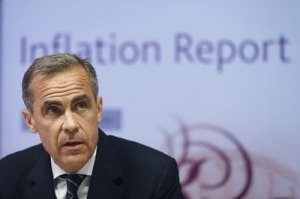
The BoJ disappointed with no QE change and now the market awaits the BoE’s monetary policy response to Brexit
The U.S. Federal Reserve and the Bank of Japan (BOJ) showed the two sides of central bank action this week. The Fed’s Federal Open Market Committee (FOMC) ended with no change to the U.S. benchmark interest rate. The lone dissenter was once again Federal Reserve Bank of Kansas City President Esther George. The main take away from the statement was the less dovish “Near-term risks to the economic outlook have diminished” but it was not enough to lend any support the USD who was down against majors. Employment data will be influential to the fate of the dollar with the release of the U.S. non farm payrolls (NFP) on Friday, August 6 at 8:30 am EDT.
The Bank of Japan (BOJ) has been under pressure as the early momentum from Abenomics since 2014 has eroded and the Japanese economy is again facing strong deflationary pressures. BOJ Governor Haruhiko Kuroda did not offer a repeat of his bold quantitive easing program launch of 2014 and instead opted for a minor update to the EFT purchasing program keeping the size of the QE intact and not discussing other options such as longer term bonds or use of helicopter money. The JPY promptly appreciated and is once again knocking on the 100 level.
The Bank of England (BoE) Super Thursday on August 4, starts at 7:00 am EDT with the release of the Inflation Report, MPC bank rate votes, the MPC summary and the official bank rate. BoE Governor Mark Carney will address the financial press at 7:30 am EDT. The BoE is heavily anticipated to deliver a combination of stimulus measures. A rate cut is expected to the 0.50 percent interest rate along with a possible QE program upgrade a less likely outcome but still worthy of consideration by the central bank.

The EUR/USD lost 1.367 percent in the last 5 days. The pair is trading at 1.1166 after a cautious Fed made no changes to its benchmark interest rate on Wednesday and the advanced GDP was only 1.2 percent in the second quarter when 2.6 had been the consensus forecast. The slowdown in U.S. growth is a concern for the USD even as three major central banks need to step up their easing efforts. The European Central Bank (ECB) stood pat in July but the Brexit fallout will have President Draghi looking for a way to boost growth beyond the already impressive QE and negative rate options.

The USD/JPY lost 3.14 in the past trading week. The pair is trading at 102.73 and threatening to break under 100 as the Bank of Japan underwhelmed the assumptions of the market with a lower than expected stimulus commitment. The JPY has had a volatile month after Brexit triggered a flight to safety and forced the BOJ to be the first major central bank to issue a new round of easing monetary policy. BOJ Governor Haruhiko Kuroda disappointed markets that wanted a bolder approach than the doubling of ETF purchases with no changes to QE or interest rates.

The GBP/USD gained 0.97 percent in the last 5 days. The pound has taken advantage of the patience of the U.S. Federal Reserve and the disappointing U.S. advanced GDP to recover some ground versus the USD. The words of Bank of England (BoE) Governor Mark Carney pointed to a summer rate cut, and with July now in the past the monetary policy meeting in August 4 is anticipated to bring about a lower interest rate in response to the lower growth expectations following the outcome of the British vote to leave the European Union.

West Texas has lost 6.604 percent in the last week. The price of energy has been falling and is currently trading at $40.48. The $40 price level seems within reach as a dual concern of slower global demand and a large supply glut in market reacting to geo political risks have pressured crude downwards. The output freeze proposed in Doha never materialized even as the talks leading up to it where the main reason the oil market stabilized after the free fall at the beginning of the year. A failure to agree on output and with Iran rejoining the energy market after the end of the nuclear embargo has put global production of crude at record high levels at the same time of dwindling demand.
Market events to watch this week:
Sunday, July 31
9:00 pm CNY Manufacturing PMI
9:45 pm CNY Caixin Manufacturing PMI
Monday, August 1
4:30 am GBP Manufacturing PMI
10:00 am USD ISM Manufacturing PMI
9:30 pm AUD Building Approvals m/m
9:30 pm AUD Trade Balance
11:00 pm NZD Inflation Expectations q/q
Tuesday, August 2
12:30 am AUD Cash Rate
12:30 am AUD RBA Rate Statement
4:30 am GBP Construction PMI
Tentative NZD GDT Price Index
Wednesday, August 3
4:30 am GBP Services PMI
8:15 am USD ADP Non-Farm Employment Change
10:00 am USD ISM Non-Manufacturing PMI
10:30 am USD Crude Oil Inventories
9:30 pm AUD Retail Sales m/m
Thursday, August 4
7:00 am GBP BOE Inflation Report
7:00 am GBP MPC Official Bank Rate Votes
7:00 am GBP Monetary Policy Summary
7:00 am GBP Official Bank Rate
7:30 am GBP BOE Gov Carney Speaks
8:30 am USD Unemployment Claims
9:30 pm AUD RBA Monetary Policy Statement
Friday, August 5
8:30 am CAD Employment Change
8:30 am CAD Trade Balance
8:30 am CAD Unemployment Rate
8:30 am USD Average Hourly Earnings m/m
8:30 am USD Non-Farm Employment Change
8:30 am USD Unemployment Rate
*All times EDT
For a complete list of scheduled events in the forex market visit the MarketPulse Economic Calendar